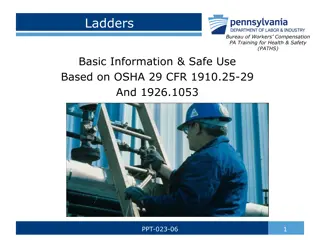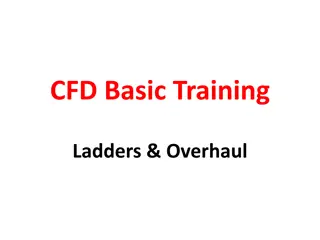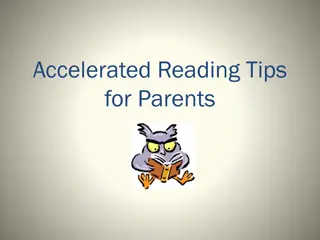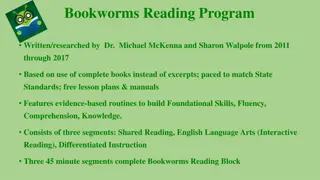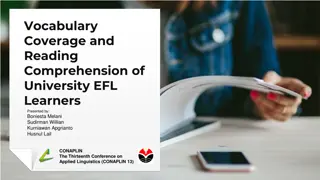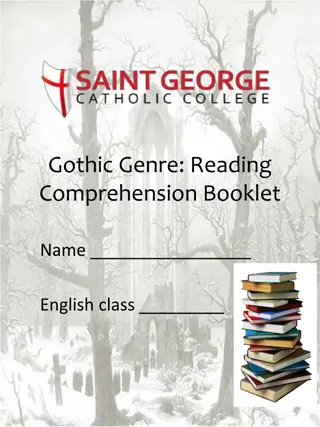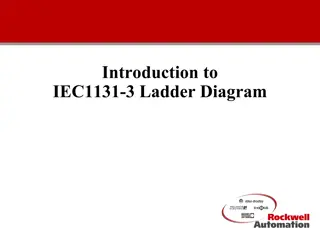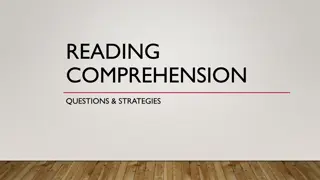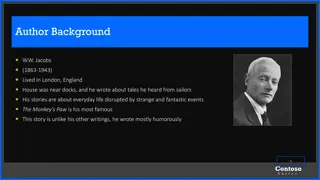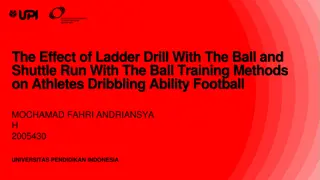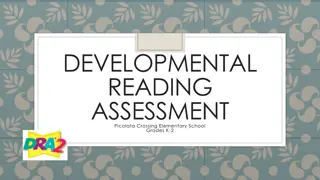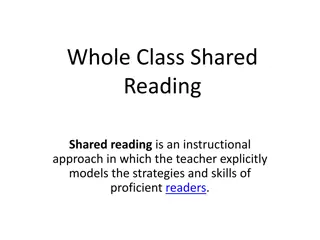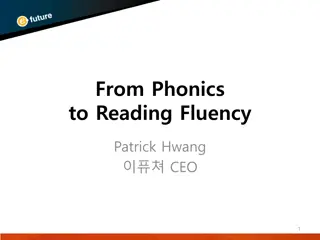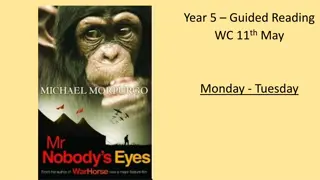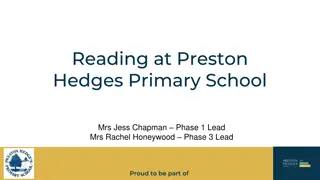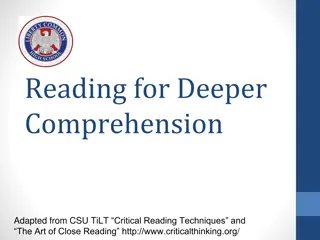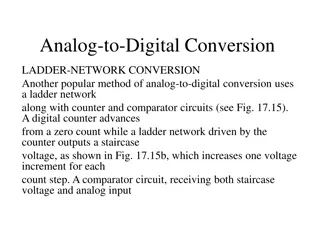Jacobs Ladder Reading Comprehension Program Overview
Jacobs Ladder Reading Comprehension Program, developed by Dr. Tracy Inman, provides students with a structured approach to enhance their critical thinking skills in reading. The program consists of six skill ladders, each focusing on different components like sequencing, cause and effect, generalizations, themes, and more. Students progress through the ladders, from lower to higher level questions, to develop a deeper understanding of texts and improve their analytical abilities.
Uploaded on Sep 16, 2024 | 0 Views
Download Presentation

Please find below an Image/Link to download the presentation.
The content on the website is provided AS IS for your information and personal use only. It may not be sold, licensed, or shared on other websites without obtaining consent from the author.If you encounter any issues during the download, it is possible that the publisher has removed the file from their server.
You are allowed to download the files provided on this website for personal or commercial use, subject to the condition that they are used lawfully. All files are the property of their respective owners.
The content on the website is provided AS IS for your information and personal use only. It may not be sold, licensed, or shared on other websites without obtaining consent from the author.
E N D
Presentation Transcript
Project RAP: Jacobs Ladder Reading Comprehension Program Dr. Tracy Inman June 2, 2016
Jacobs Ladder Primary 2 was written in response to teacher findings that students at the primary level who were already reading needed more rigorous materials and scaffolding to consistently work at higher levels of thinking in reading. VanTassel-Baska and Stambaugh, 2012, 1-2
What did you think? SUMMER CAMP TEACHERS
Overview Six Skill Ladders, A-F Students climb ladders moving from lower level to higher level questions Each ladder stands alone, focusing on one critical thinking component in reading
Six Ladders Ladder A: Focus on Implications and Complications Rung 3: Consequences and Implications Requires students to think about both short- and long-term events that may happen as a result of an effect they have identified Rung 2: Cause and Effect Requires students to think about relationships and identify what causes certain effects and/or what effects were brought about because of certain causes Rung 1: Sequencing Requires students to organize a set of information in order
Ladder B: Focus on Generalizations Rung 3: Generalizations Requires students to use the list and categories generated in rungs 1 and 2 to develop general statements that apply to all of their examples Rung 2: Classifications Requires students to categorize examples and details based on characteristics Rung 1: Details Requires students to list examples or details from what they have read and/or to list examples they know from the real world or have read about
Ladder C: Focus on Themes Rung 3: Theme/Concept Requires students to state the central idea or theme for the reading Rung 2: Inference Requires students to think through a situation in the text and come to a conclusion based on information and clues provided Rung 1: Literary Elements Requires students to identify and/or describe setting and to develop an understanding of characters by identifying qualities and comparing to other characters
Ladder D: Focus on Creative Synthesis Rung 3: Creative Synthesis Requires students to create something new using what they have learned from the reading and their synopses of it Rung 2: Summarizing Requires students to summarize larger sections of text by selecting the most important key points within a passage Rung 1: Paraphrasing Requires students to restate a short passage in their own words
Ladder E: Focus on Emotional Development Rung 3: Using Emotion Requires students to begin regulating emotion for specific purposes Rung 2: Expressing Emotion Requires students to express emotion in response to their reading of various selections Rung 1: Understanding Emotion Requires students to identify emotions in characters and relate them to their own lives
Ladder F: Focus on Word Study Rung 3: Playing with Words Requires students to reflect on key words or literary elements to apply them to new situations or contexts Rung 2: Thinking About Words Requires students to think about how the author uses key words or language elements studied in the first rung to enhance the meaning of the story Rung 1: Understanding Words Requires students to consider how words are used in the context of the story to promote meaning and to find new examples or uses of literary elements
Additional Goal Promote learning through interaction and discussion of reading materials in the classroom
Bellarmine Literacy Project Phonemic Awareness Phonics Fluency Vocabulary Comprehension Strategies
Overlap of JCPS Initiatives Bellarmine Literacy Project Project RAP Phonemic Awareness Phonics Fluency Vocabulary Comprehension Strategies Ladder F Ladders A-E
Points to Consider Many selections are intended to be read aloud May not be at appropriate individual reading level May not be able to read fluently Intent: critical thinking Most vocabulary is grade-level appropriate Be sure to discuss new or unfamiliar words before reading the text Jacob s Ladder is not intended as a worksheet or individual task Stimulus for facilitation of ongoing discussion and reasoning
Points to Consider Review how to complete the ladders with the entire class at least once, outlining expectations and record-keeping tasks, as well as modeling the process prior to assigning small group or independent work Allow more independent work as students progress coupled with small group or paired discussion, and then whole-group sharing with teacher feedback Dyads and small groups encourage discussions that stress collaborative reasoning, thereby fostering greater engagement and higher level thinking (Parallels Math Talk) Encourage students to write ideas independently then share with a partner then discuss the findings with a group
Process of Jacobs Ladder See page 13 for questions and prompts
Time Allotment Estimate 15-30 minutes to read selection (aloud with teacher or partner or solo) 20-30 minutes to complete one ladder individually 10-20 minutes for dyad and whole group discussion
Assessments Provided Pretest The Crow and the Serpent (pp. 134-135) Discussion checklist A Guide for Monitoring Student Talk (p. 139) Classroom Diagnostic Forms Appendix B (p. 141+) Posttest The Peacock and Juno (pp. 136-137)
Pretest: The Crow and The Serpent Setup pretest Explain reasoning behind doing preassessment Administer pretest Handout with synonyms used for complex vocabulary Score Rubric for Scoring Aesop s Fables Record
Posttest: The Peacock and Juno Setup posttest Explain reasoning Administer posttest Handout with synonyms used for complex vocabulary Score Rubric for Scoring Aesop s Fables Record Look for growth from pretest
Activity: Jacob s Ladder
Plan Teacher reads The Caterpiller (p.83) aloud defining potentially problematic words Students break into small groups Group 1: Ladder A Group 2: Ladder A Group 3: Ladder A Group 4: Ladder D Group 5: Ladder D Group 6: Ladder D Teacher uses Discussion Checklist while circulating Students share with class; Teacher uses questioning on page 13 Teacher uses Classroom Diagnostic Form Debrief
Resources Each school has multiple grade-level Jacob s Ladder books Each school has a complete library for all books explored in Jacob s Ladder Work within your school to decide how to best utilize the curriculum
How to Use Jacobs Ladder Cluster class Differentiate via cluster using Jacob s Ladder materials and others use another curriculum Whole class Differentiate via ladders Differentiate via rungs of ladders Other ideas?


